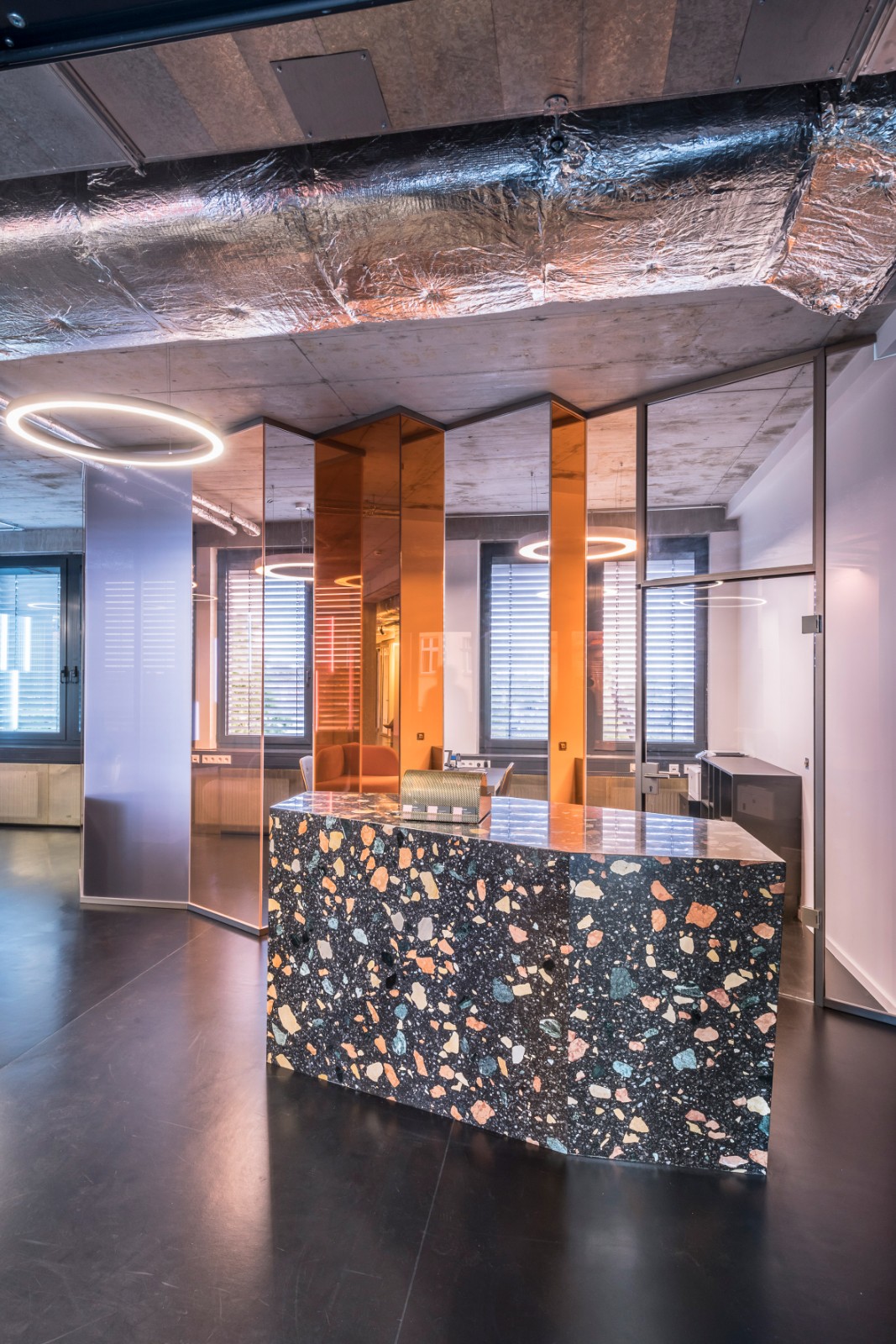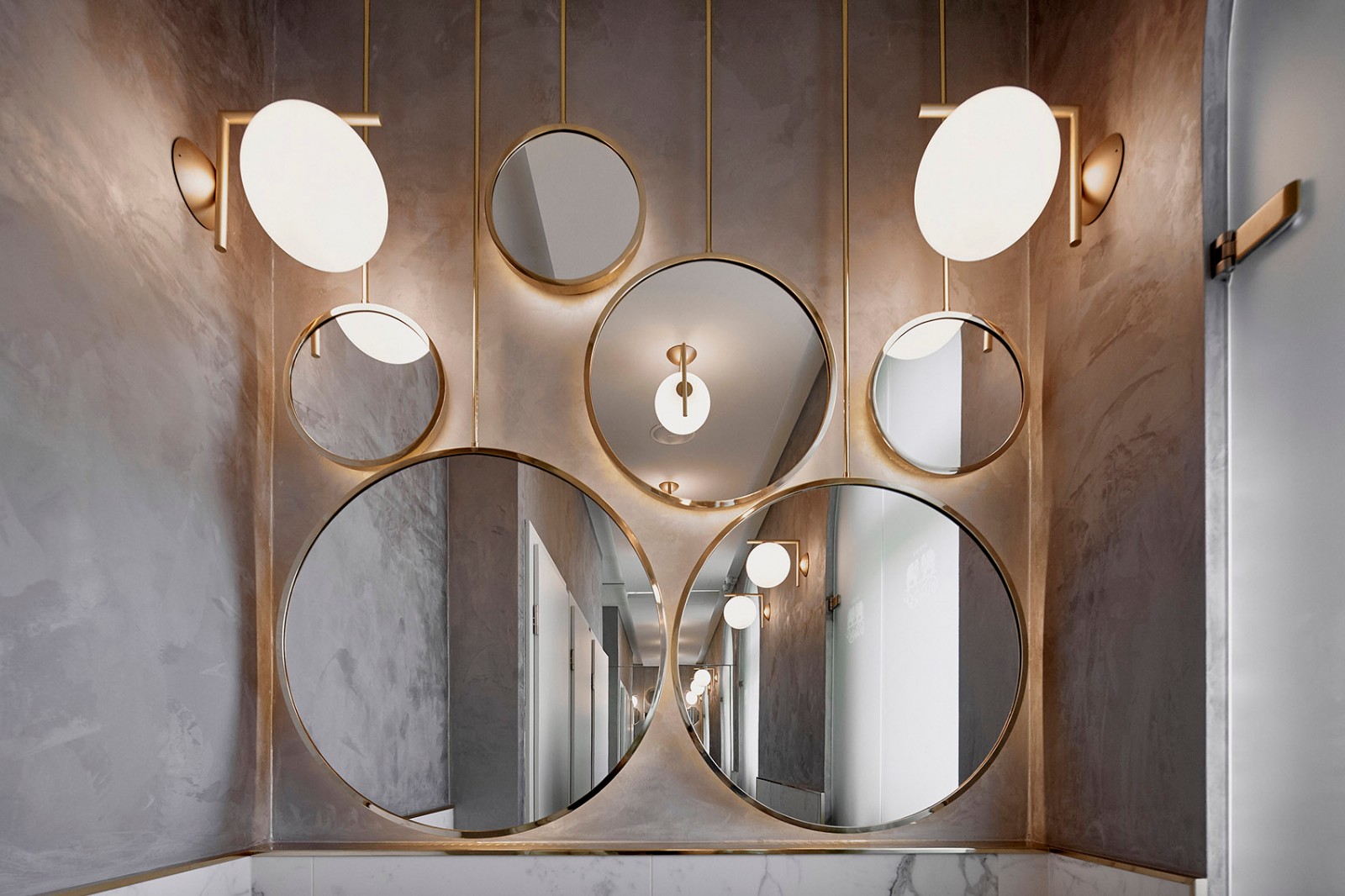AD Classics Centre Le Corbusier (Heidi Weber Museum) Le Corbusier
2013-01-24 00:00
海蒂·韦伯(Heidi Weber)是一位成功的室内设计师,也被称为柯布西耶的“伟大赞助人”。1960年,她委托这座建筑做自己的小房子,也为勒·柯布西耶(Le Cor布西耶)的艺术品提供了一栋大楼,她已经花了多年的时间(最值得注意的是,他的豪华马车)。因此,这个项目是一个“完整的艺术作品”,或者说是一个“Gesamtkunstwerk”,在那里,柯布西耶为了自己的艺术而设计一座建筑。对于柯布西耶来说,这是一项合适的任务,因为,西格弗里德·吉迪恩认为,“艺术的综合在他创造的每一件事物中都表现得如此强烈。”
Heidi Weber, a successful interior designer and so called ‘great patron’ of Corbusier, commissioned the building in 1960 to be both a small home for herself, and a building to house Le Corbusier’s artwork, which she had already spent years patronizing (most notably, his chaise longue). The project, then, was to be a ‘complete work of art,’ or a ‘Gesamtkunstwerk’ as it were, where Corbusier would design a building for the sake of his own art. This was a fitting task for Corbusier as, according to Sigfried Giedion, “It is essentially the synthesis of the arts that was expressed so strongly in everything he created.”
该建筑由两个主要的体积要素组成:一个漂浮的阳伞屋顶结构及其下面,一个两层的直线体积坐在一个混凝土展馆地板上。标准尺寸为226cmx226cmx226cm(约7.5立方英尺)的组合式钢框架立方体构成了基础体积的结构框架。这些立方体的两套堆叠在一起,以达到两层楼高的建筑。所有必要的元素,包括墙壁,窗户,门等,都被栓在这些框架中。这些预制立方体的性质,使一个完全开放的地面计划,可以随意划分,一个方便,很好地协调一个混合展览/住宅空间。以这种方式,“勒柯布西耶使用标准化的部分,创造个人形式,而不是统一的重复,”一项技术,约恩于宗著名的探索。
The building is composed of two major volumetric elements: a floating parasol roof-structure and beneath it, a two-story rectilinear volume sitting on a concrete pavilion floor. Modular steel frame cubes with a standard dimension of 226cmx226cmx226cm (about 7.5 cubic feet) make up the structural framework of the base volume. Two sets of these cubes are stacked on top of one another to achieve the two-story height of the building. All necessary elements, including walls, windows, doors, etc., are bolted into these frames. The nature of these prefabricated cubes make for a completely open ground plan that can be divided at will, a convenience well attuned for a hybrid exhibition/dwelling space. In this way, “Le Corbusier used standardized parts to create individual forms instead of uniform repetitions,” a technique Jorn Ützon famously explored.
屋面结构由两个由焊接钢板制成的12mx12m正方形单元组成,位于四个矩形支承上。每个正方形都是阳伞的形状,一个朝上,另一个朝下。整个结构都是预制的:由钢铁制造公司生产,以尽可能大的部分带到现场,在地面上组装到最后的状态,最后被提升到适当的位置。这两把阳伞在建筑过程中提供了遮阳和雨水的掩护,并继续为整个展馆提供掩护,同时也是建筑的主要美学元素。
The roof structure, which stands on four rectangular supports, consists of two 12mx12m square elements made of welded steel sheets. Each square is in the shape of a parasol, one facing up and the other down. The entire structure is prefabricated: produced by the steel manufacture, brought to the site in the biggest possible pieces, assembled to its final state on the ground, and finally lifted into place. The two parasols provided cover from sun and rain during construction and continue to provide cover for the entire pavilion, while also acting as a dominant aesthetic element of the building.
搪瓷板以原色和玻璃封套为主体积的建筑。在其他建筑的语言中,面板的尺寸是标准的,是钢立方体的三分之一。这些面板和它们各自的颜色分布在整个建筑的外部,有一种明显的节奏。
Enamel panels in primary colors and glass envelope the main volume of the building. In the language of the rest of the building, the panels are of a standard dimension, one-third the size of the steel cubes. The panels and their respective colors are distributed throughout the building’s exterior with a perceptible rhythm.
尽管这座建筑本身似乎是一个主要的关注点,但展馆并没有忽视它的场地。打开向外的门窗,有助于模糊内外的界限;阳伞结构下的屋顶花园,可以欣赏它美丽的景点,其中包括一个靠近展馆的小池塘。
Despite what seems to be a major focus towards the building itself, the pavilion does not neglect its site. Pivoting doors and windows that open to the outside help to blur the boundary between outside and inside; and a roof garden beneath the parasol structure allows for appreciation of its beautiful site, which includes a small pond adjacent to the pavilion.
值得注意的是,他在1961年交付给韦伯的该项目的第一次设计需要一座完全是混凝土的建筑。直到1962年,柯布西耶才把设计改为以钢铁为主。然而,在它的最终形式中,他确实选择了使用一些具体的,但只用于垂直循环。这只有两个结构:两层的工作室空间的内部楼梯,和外部坡道,两者从地面到屋顶花园。
It is important to note that the first design for the project, which he delivered to Weber in 1961, called for an entirely concrete building. It wasn’t until 1962 that Corbusier changed the design to be predominantly in steel. In its final form, however, he did choose to use some concrete, but only for the vertical circulation. This consists of only two structures: the interior staircase in the two-story studio space, and the exterior ramp, both of which go from the ground to the roof garden.
建筑师勒柯布西耶位置苏黎奇,瑞士类别房屋建筑师负责勒柯布西耶客户海蒂韦伯面积315.6平方米工程年1967年塞缪尔路德维希照片
Architects Le Corbusier Location Zürich, Switzerland Category Houses Architect in Charge Le Corbusier Client Heidi Weber Area 315.6 m2 Project Year 1967 Photographs Samuel Ludwig
最新情况:应市长部(苏黎世市)的请求,我们在文章中将勒柯布西耶中心更名为Pavillon Le Corbuser。
Update: following a request from the Department of the Mayor (City of Zürich), we have changed the name of the Centre Le Corbusier to the Pavillon Le Corbusier in the article text.
 举报
举报
别默默的看了,快登录帮我评论一下吧!:)
注册
登录
更多评论
相关文章
-

描边风设计中,最容易犯的8种问题分析
2018年走过了四分之一,LOGO设计趋势也清晰了LOGO设计
-

描边风设计中,最容易犯的8种问题分析
2018年走过了四分之一,LOGO设计趋势也清晰了LOGO设计
-

描边风设计中,最容易犯的8种问题分析
2018年走过了四分之一,LOGO设计趋势也清晰了LOGO设计


























































